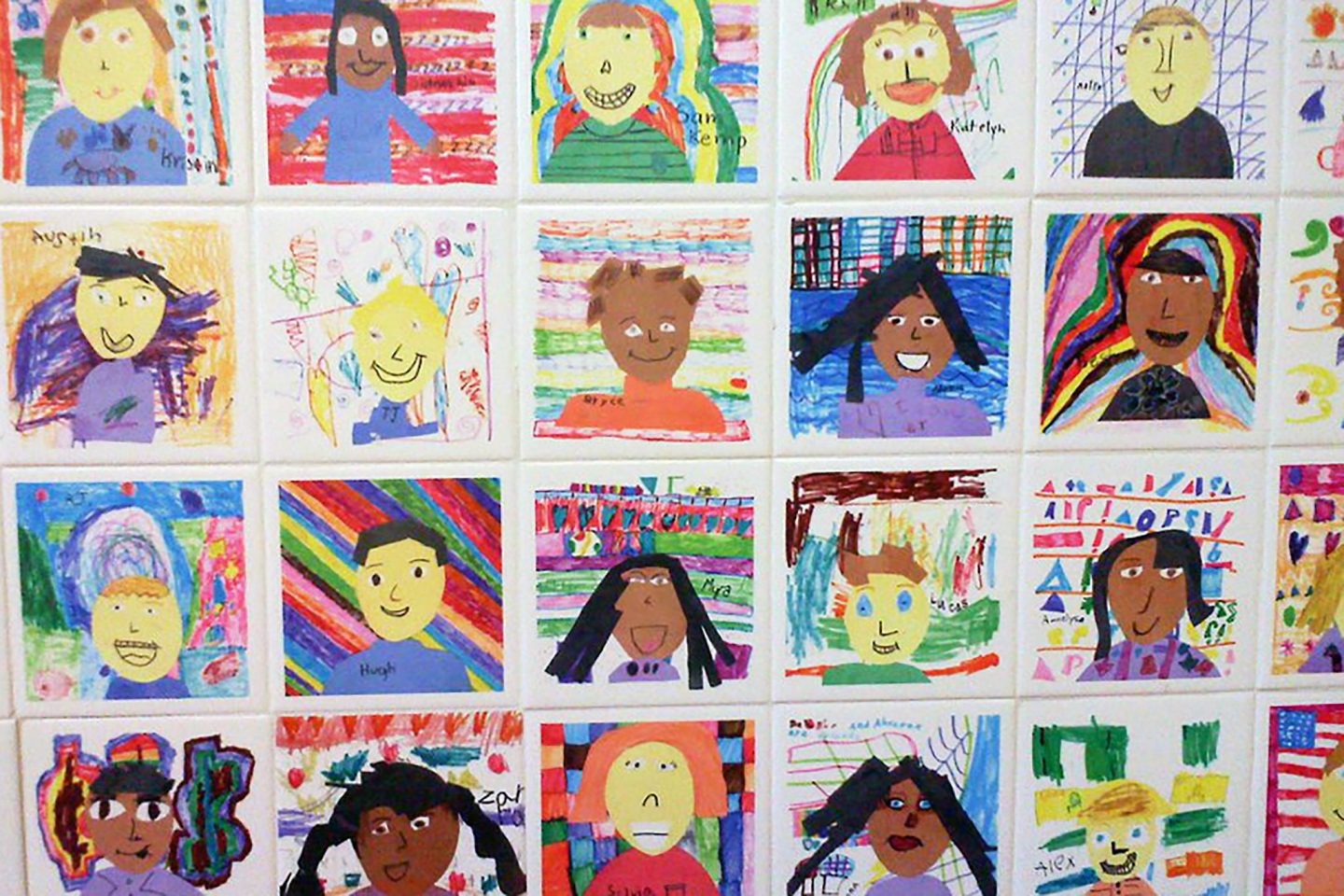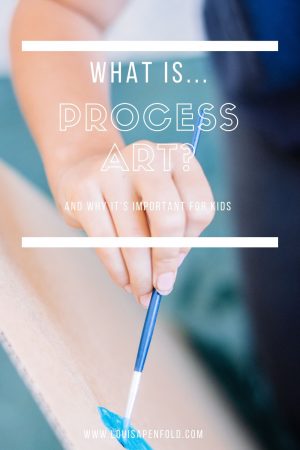Exaples of How to Give Instructions for Process Art Activity
Art can play an important role in children's learning. For example, it can encourage children to experience the world in new and divergent means. Art can also allow children to explore and express feelings, ideas and dispositions that cannot be communicated through words and numbers.
You may accept heard near 'Product' and 'Process' fine art already. In this post, I talk about what these terms mean and how they tin both be useful in supporting children'southward inventiveness.
What is Product Fine art?
Product Fine art is structured and focused activities that aim to produce a item outcome. For case, 'create a rocket from recycled cardboard' or 'make a snail out of clay.' These activities often apply specific instructions, techniques and materials to make a specific cosmos.
How is Product Fine art useful and restrictive?
Product Fine art activities can be useful in helping children to learn new art techniques or how to
A limitation of Product Art is that information technology may restrict children'southward experimentation and creativity if the activity is too focused on making one a specific outcome. For example, if a whole glass of starting time graders draws a self-portrait using step-by-step instructions given past a instructor, this activity limits children'south opportunity for divergent learning and cocky-expression. The image beneath shows an

What is Process Fine art?
Process Art is oft talked about as being the opposite of Production Art. In this approach, there is a strong focus on children'south feel and experimentation in an activity, instead of them making a particular artistic creation. In Process Art activities there is oftentimes
An educator or parent may carefully select and prepare the materials, tools and their spatial arrangement however once the children start playing in the activeness, the developed may have quite a passive role. There is a strong focus on creative processes and children's methods, as opposed to a focus on producing
An example of a Procedure Art activity could offset with a large brawl of clay existence presented on a tray. A group of toddlers could then play with the dirt and explore the cloth's backdrop in different ways. There is no correct or incorrect in what the toddler do with the dirt. The focus is on the artistic and experimental procedure.
Some other instance of a procedure-based art can be seen in the installations of Danish artist, Olafur Eliasson (pictured below). People tin can interact with the lights, colours and spaces of his artworks in many different ways. Like the clay activity with the toddlers, in that location is no correct or incorrect for what people do in the installation.
te meto) is licensed under CC BY-NC-SA 2.0 Artwork past Olfar Eliasson
How is Process Fine art useful and restrictive?
Procedure Art is useful in children'southward learning as it allows them to explore their inventiveness in unrestricted ways. It can also exist a beneficial approach with babies and toddlers as no formal or verbal instructions are needed to appoint in the activity. Process Art is oft talked well-nigh every bit being favourable in Reggio Emilia and Steiner education settings.
However, Process Art tin also restrict children'south
Procedure Art activities also ofttimes ignore the of import role educators and parents can play in scaffolding learning. For example, adults may exist afraid to innovate a new technique or slice of vocabulary to a child as it may interfere with their self-directed creative process.
Also, while some children may really engage in a gratis-play Procedure Fine art activeness, other children may feel lost and confused as it is too open-ended. It is therefore useful in some situations, and with some children, but cannot be used as a 'one-arroyo-fits-all' model.
Finding a happy heart basis…
Both Product and Process Fine art tin can be used to back up children's learning in dissimilar ways. They can as well be combined to create a structured, yet open-ended art experience for children.
For example, if you are doing a clay activeness with children, you could outset off creating product-driven artwork to start such as a pinch pot or snail. This first part of the activeness may permit children to learn new techniques, skills and vocabulary connected to the medium. Following this, you lot could allow children to freely explore and create new artworks with the clay without instructions.
By combining both pedagogical structures with open-ended experimentation, expansive opportunities for children's learning with art tin be created.
Interesting Links on Product and Process Art
Tate fine art museum in London (U.k.) have put together this resource that defines the term 'Process Art.' Visual artists including Richard Serra, Robert Morris and Jackson Pollock are
This YouTube video shares a 'Funnel Painting' Process Art activity put together by Creative Mommy Stuff.
Related Posts
Inventiveness and multiculturalism in children's learning– an interview with creative person Lorna Rose
Children's creative learning through the art of Daiga Grantina
Tips for arranging materials to support children'due south creative learning

Source: http://www.louisapenfold.com/product-and-process-art-a-post-for-parents/
0 Response to "Exaples of How to Give Instructions for Process Art Activity"
Post a Comment